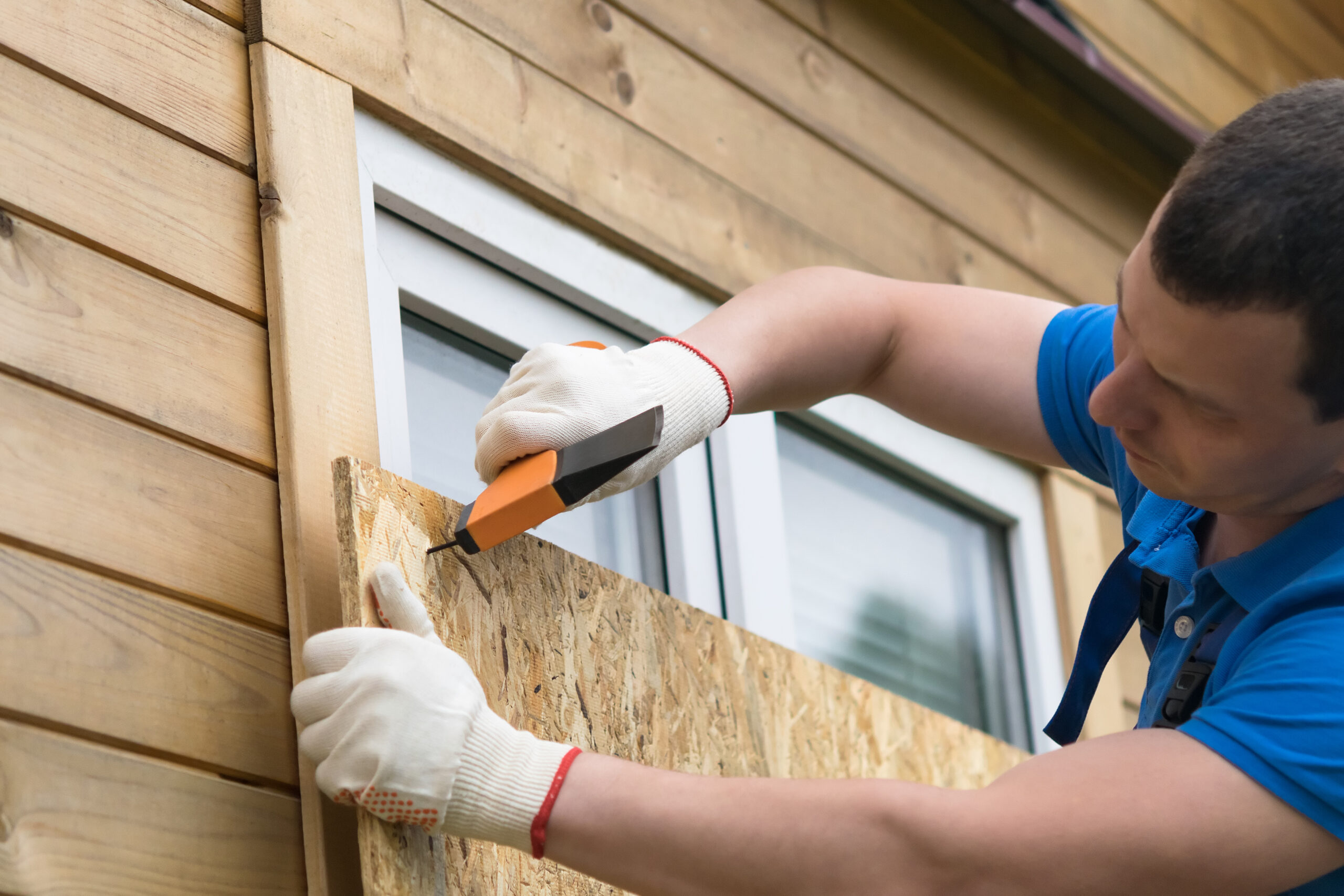Roof Report
How to Safely Prep Your Long Island Home for Another Elsa

Long Island residents felt the impact of Tropical Storm Elsa in the form of powerful winds, dangerous rip currents, high surf along the beaches, coastal flooding, and heavy rainfall. Fallen trees on the tracks suspended the LIRR’s Oyster Bay Branch, cars were pulled from the flooded streets of Glen Cove, and restaurants closed along Route 110 in Melville.
A Category 1 hurricane would inundate just about all the immediate south shore of Long Island including the north side of Great South Bay locations and both sides of the north and south forks.
A Category 3 hurricane would completely flood Montauk Highway in areas between the Nassau County line in Amityville to the end of Long Island in Montauk including Oakdale, Babylon, Bayport, West Islip, Great River, Sayville, Patchogue, Southampton, and Center Moriches.
And a Category 4 hurricane would impact entire towns including Lindenhurst, Bay Shore, Long Beach, South Oyster Bay, Valley Stream, Lynbrook, Merrick, Wantagh, and more.
If another major storm or hurricane hits the Suffolk or Nassau County areas, King Quality is here to help you and your home handle the hazards and hassles with proactive hurricane safety tips.
A hurricane’s strong winds and heavy rainfall will target your roof, windows, and siding with the potential to cause significant damage. (On average, homeowners spend $9,073 on hurricane-related repairs.) However, there are DIY ways to protect your home and property against wind, water, and other types of severe weather.
From your roof, windows, and doors to your backyard and patio furniture, we’ve got you, your home, and your family covered with hurricane home preparedness and protection.
Inspect your roof—before the storm
Your roof is the largest potential opening of your house and one of the most vulnerable areas for damaging wind and water to get inside and wreak havoc. It goes without saying that your roof deserves a top spot on your proactive hurricane preparedness list.
Responsible Long Island homeowners inspect their roof and home after hurricane roof damage. But savvy homeowners check for potential problem areas before the high winds and heavy rain hit. So, grab a pair of binoculars or climb inside the attic to tackle this important, proactive step in mitigating hurricane-related damage.
After the storm, hurricane roof damage is a game of repair or replace. There are minor issues you can repair including brittle, loose, or peeling shingles, most of which you can reseal, re-attach, and keep intact with dry roofing cement. (You can also buy some polyurethane sealant at Home Depot or your local Nassau or Suffolk County hardware store.)
However, more serious problems including curling, damaged, and missing shingles—especially something causing a leak—may call for a new roof. Call your local roofer to assess the damage and figure out if your roof problem is a repair or replace job.
Board up windows and doors
Next on the list of areas most vulnerable to hurricane damage—after your roof—are your windows and doors. These weak spots in your home’s defense against hurricane-force winds and severe rain demand special attention before and after a storm.
Strong wind gusts can break windowpanes or blow windows right off your home. Missing windows can flood the inside your home and shards of broken glass can injure your family and pets. Even small openings and minor leaks can grow into larger, more serious problems.
Hurricane window protection begins with learning how to board up windows to better protect your home interior against damaging wind and water.
Before a storm, nail pieces of precut plywood to the window frames for last-minute protection. Measure the window frames and cut pieces of plywood to overlap them by four inches. Find the window studs (from inside your home) and drill a wooden screw into each stud.
Close and lock your windows and doors, too. Even normal weather can damage seals over time and allow sideways-blowing rain to get inside your home during a storm. So, check the seams, seals, caulking, and glazing around frames and panes to protect your windows during a hurricane.
Reseal windows, replace or add more caulking, and fill gaps or holes in the siding where wind-driven rain can penetrate and damage inside walls.
For advanced protection, cover your windows, doors, and skylights with impact-resistant storm shutters or glass. (Select a product rated to withstand flying debris up to at least 100 mph).
Board up your doors, too. You can also invest in heavy-duty bolts—which are quick and easy to install and range from $20 to $50—to keep the tops and bottoms of your doors more secure.
And don’t forget about your garage door. Open holes can depressurize your garage—the process where intense external winds meet the calm air inside—which can cause a structure to collapse.
Clear and secure gutters and downspouts
Next on the list of Long Island hurricane preparation areas to focus on are your gutters and downspouts which together carry rainwater from your roof down to a drain or the ground.
Check that both are secure, clean, and clear of any leaves, branches, and debris which can block the flow of water, cause overflow and damage your siding or roofing, collect water around your home’s foundation, or send water straight into your basement or crawl space. And always make sure that your downspouts drain water away from your house.
Fix cracks in the foundation
Cracks or signs of distress in your home’s foundation—which are not always visible—can signal a serious threat to hurricane-related flooding or plumbing issues. However, a little DIY patch work goes a long way. Walk along your home perimeter, check for signs of stress in the concrete at the bottom, and patch any visible blemishes.
Secure your yard, porch, deck, and patio
Follow the “better safe than sorry” rule when preparing your home for a hurricane and pick up anything that can become a missile when picked up by high winds.
Bring all outside patio and lawn furniture and decor, potted plants, bikes, garbage cans, and toys indoors. Secure outdoor sculptures with burlap or blankets tied with rope. A porch swing may be secure in good weather but not in a hurricane with 100 mph winds. When in doubt, ask yourself if an item can fly away. If the answer is yes, bring it inside.
You also want to focus on your landscaping to prevent larger and more expensive accidents from happening.
Cut low-hanging branches, unstable bushes, or trees. Trim and prune trees and shrubs within ten feet of your house—especially near windows—and remove loose, broken, or dead limbs to increase the chances your trees will make it through a storm. A tree taken down before a storm is always better than dragging one out of your living room later.
“Anchored” is another key word for the items outside your house. A secure, undamaged, and properly anchored deck and porch post could weather the storm. However, an unsecure post could lift into the air, become a projectile, and damage your home and property.
Take photos for your insurance claim
Take before-and-after photos of your Suffolk or Nassau County home for a more seamless and successful insurance process. Photograph your exterior, yard, and outdoor possessions for proof of your home’s condition and goods so that you have visual evidence to back up any damage claims.
Purchase supplies for cleanup and repair.
After the storm, make a list of emergency repairs, starting with damage that poses danger to your family or could potentially lead to further damage if left unfixed.
Plastic, tarps, and plywood are your triple threat for repairing your home after a storm. Common post-hurricane repairs range from covering broken windows with plastic and covering the roof with tarps to stopping a gas or water leak and boarding up a broken door.
However, don’t repair anything else just yet. First, you want your claims adjuster to view the property and assess the damage to help you get the best offer when you settle your insurance claim.
In the meantime, start crossing off your hurricane supplies list for some DIY post-storm home cleanup including:
- Bleach
- Buckets
- Dust mask
- Flashlight
- Gloves (chemical resistant and heavy-duty work)
- Household cleaner
- Large garbage bags
- Large trash can
- Liquid disinfectant soap
- Sponges, scouring pads, and scrub brushes
- Towels
Royal treatment for you and your home.
If your post-hurricane damage demands a major repair or replacement, hire a professional to get your Long Island home back in order. At King Quality, our complete post-hurricane home walk-around and professional inspection diagnoses and treats all the trouble spots putting your roof and home at risk. And our goal is to always treat you like royalty. Call 631-573-0642 today to schedule a free consultation.









